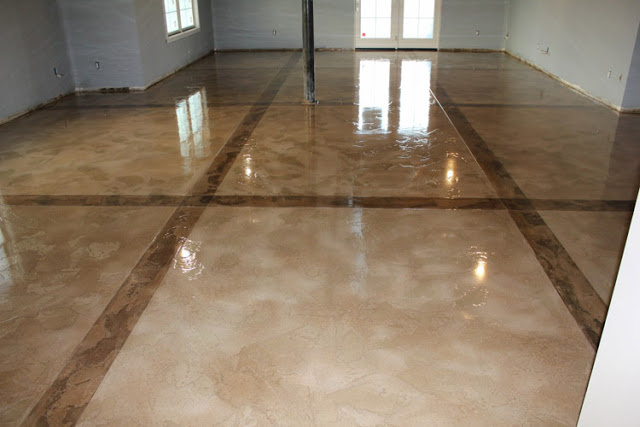Ultimate Guide to Installing Sturdy Epoxy Floors in Residential Spaces
When it pertains to transforming property areas with resilient epoxy floorings, a methodical strategy is vital. From selecting the suitable epoxy flooring system to meticulously preparing the surface and carrying out a flawless application, every step plays a critical duty in ensuring a aesthetically appealing and lasting result. There's one facet commonly overlooked that can dramatically impact the durability and high quality of the epoxy floor. By addressing this crucial element early on, you can safeguard your financial investment and take pleasure in a smooth epoxy flooring that stands the examination of time.
Selecting the Right Epoxy Flooring System
Selecting the ideal epoxy floor covering system is a vital step in making certain long life and performance in property rooms. Epoxy floor covering provides longevity, simple maintenance, and aesthetic charm, making it a prominent choice for residential applications. When selecting an epoxy system, factors such as the sort of epoxy, degree of sturdiness required, design choices, and budget restrictions need to be taken into consideration.
There are different kinds of epoxy floor covering systems readily available, including water-based epoxy, solvent-based epoxy, and 100% solid epoxy. Water-based epoxy is easy and green to use, making it appropriate for property use. Solvent-based epoxy supplies a much more long lasting coating yet gives off strong smells during installation. 100% solid epoxy is one of the most long lasting alternative, ideal for high-traffic locations in domestic rooms.

Preparing Your Residential Area
When considering the setup of long lasting epoxy floors in domestic rooms, adequate prep work of the area is fundamental to ensuring a successful and resilient application. The very first step in preparing your domestic area for epoxy flooring is to completely clean up the surface. Any type of grease, debris, or dust should be removed to ensure proper bond of the epoxy finishing. This can be done through sweeping, vacuuming, and cleaning the floor with an appropriate cleaner.
Next, it is important to repair any splits, openings, or blemishes in the flooring. These should be filled and leveled to develop a smooth and even surface for the epoxy covering to be used. Additionally, look for dampness problems as too much wetness can cause the epoxy to bubble or peel. Address any moisture problems prior to proceeding with the installment.
Lastly, ensure proper air flow in the room throughout the installment process to permit the epoxy fumes to dissipate. Sufficient preparation of the house establishes the foundation for an effective epoxy flooring informative post application.
Applying Epoxy Finish
To start the procedure of using epoxy coating, extensively blend the epoxy resin and hardener according to the supplier's instructions. It is essential to follow the advised mixing proportions specifically to ensure the epoxy remedies appropriately and attains maximum longevity. When the epoxy components are mixed, pour the mix onto the prepared floor surface in a bow pattern.
Using a roller with a medium-nap cover, spread the epoxy uniformly over the flooring, operating in workable sections to avoid the epoxy from drying out as well rapidly. Be sure to back-roll the used epoxy to get rid of any type of puddles or irregular areas, making sure a smooth and consistent surface.

Permit the epoxy finish to heal according to the producer's guidelines before proceeding with any type of more actions to guarantee a sturdy and resilient finish.
Making Sure Appropriate Curing and Drying
Effective curing and drying procedures are crucial to achieve the desired longevity and long life of epoxy floorings in residential rooms. Correct treating entails giving the epoxy layer enough time to harden and bond completely to the substrate.
Correct air movement assists the epoxy coating to heal evenly and stops any kind of issues like bubbling or uneven drying. It is suggested to follow the producer's guidelines for healing and drying times to assure ideal outcomes and make the most of the sturdiness of the epoxy floor in property setups.

Keeping and Expanding Epoxy Flooring Lifespan
Appropriate upkeep techniques play an essential role in expanding the life expectancy of epoxy floors in residential settings. Regular cleansing is necessary to avoid dust and debris from scratching the surface of the epoxy floor.
To additionally secure the epoxy flooring, take into consideration applying a new topcoat every her explanation few years, specifically in high-traffic areas. This will certainly assist renew the look of the flooring and supply an extra layer of security against deterioration. In case of any kind of spills, quickly clean them up to prevent staining and possible damage to the epoxy. By following these maintenance ideas, home owners can guarantee their epoxy floorings stay sturdy and aesthetically appealing for many years to come.
Conclusion
Finally, mounting resilient epoxy floorings in property rooms needs cautious factor to consider of the epoxy floor covering system, extensive preparation of the area, proper application of the epoxy coating, and guaranteeing proper curing and drying processes. By following these actions faithfully, homeowners can achieve a resilient go to the website and aesthetically appealing epoxy floor that boosts the sturdiness and looks of their space.
When it comes to transforming household areas with long lasting epoxy floors, a methodical approach is key. When picking an epoxy system, variables such as the type of epoxy, degree of sturdiness required, layout preferences, and budget plan restrictions should be considered.
There are numerous kinds of epoxy flooring systems offered, including water-based epoxy, solvent-based epoxy, and 100% strong epoxy.When taking into consideration the setup of resilient epoxy floorings in property spaces, adequate prep work of the area is basic to guaranteeing a successful and long-lasting application.To begin the procedure of using epoxy covering, thoroughly mix the epoxy material and hardener according to the maker's instructions.